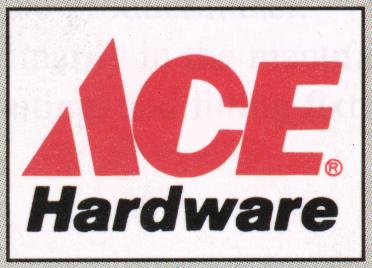
Student Project
Options
A - Current events themes/quiz (as discussed in class)
B - or complete the project below

Ace Hardware-John Madden's hardware store-is a dealer-owned cooperative for hardware, home center, and lumber and building materials store owners. It has 5,200 stores in all 50 states and several foreign countries including Iceland, Yugoslavia, and Saudi Arabia. It aims to serve the independent Ace dealer by providing low-cost high-quality products, programs, and services.
COMPANY HISTORY
In 1924, a small group of Chicago area hardware retailers decided to pool their buying and promotional efforts, establishing the roots of Ace Hardware Corporation. The company incorporated in 1928 and bought its first warehouse in Chicago in 1929. As Ace expanded, it added distribution centers outside Chicago. Benicia, California became the site of the first of these centers in 1969. In 1974, during its 50th anniversary, Ace began operating as a cooperative. In 1984, Ace began manufacturing its own paint. A state-of-the-art paint facility located in Matteson, Illinois, produces a variety of solvent-based and latex paints, including waterproofing sealer. The plant was constructed to reduce costs and improve paint quality. Ace paint continues to be one of the most successful private label products.
Today, its dealers own all of the company's capital stock. From headquarters in Oak Brook, Illinois, Ace operates 14 retail support centers with another being planned in the southwestern United States. In 1989, wholesale sales were $l.547 billion, which was an 11.9 percent increase over 1988 sales. A hoard of directors, consisting of the chairman and nine dealer-members, establishes guidelines for the professional staff of 2,800.
Ace provides a variety of services to the dealer, including retail services and training and store development. It runs company-wide television, radio, and print advertising campaigns. The concept of regionalization provides more regional programs to address differences in needs, size, and location of dealers. It gives direct assistance from Ace personnel through in-store consultations to increase sales and profits, advertising, pricing, retail services, marketing, and special regional requests. It also develops regional forums that help develop a closer relationship and improve communications between dealers and their corporation.
ELECTRONIC ORDERING
Ace dealers sell many national brand products as well as more than 3,000 Ace label products. Over 95 percent of Ace dealers order merchandise electronically. A hand-held electronic ordering terminal is used to scan the bar-coded bin tag of items that need to be reordered. In addition, the dealer can review a warehouse reorder list (WRL), which is a computer-generated report that recommends purchases based upon past ordering history. All desired orders are entered at the store and electronically transmitted to the order entry computer in the data center at Ace's corporate offices. This computer edits and saves the store's order until the mainframe computer is ready to process it. Orders are processed using batch processing and order-fill documents, and reports are generated and transmitted for printing at the dealer's retail support center. The orders are checked for accuracy and placed on an Ace truck for delivery to the individual store the next day. The dealer's invoice, generated by the mainframe's invoice system, is sent with the order.
The 95% of Ace dealers who order electronically find their orders checked for accuracy and placed on an Ace truck for delivery the next day.
ADDITIONAL COMPUTER SERVICES
The Ace Management Information Systems (MIS) department offers a variety of additional services for the independent dealer. The system provides timely and accurate information, reduces costs through automation, and helps keep Ace on the competitive edge. Price tickets and bin tags can be produced electronically. Each dealer receives a computer-generated book listing all items stocked in the retail support center serving that dealer. Through electronic publishing, the text and graphics of over 44,000 items can be produced and updated quickly in this book.
A few years ago, Ace introduced an electronic communications program called ACENET. This program allows dealers to receive the latest information on products and pricing at their retail support center through an inventory inquiry option, keep track of their bulletins through a bulletin commitronat report, send messages to the corporate offices through ACEMAIL, and tap into the Lumber and Building Materials Bulletin Board for special lumber mill offerings and daily price changes. Transactions through ACENET have soared to well over one million per month.
Recent enhancements to ACENET have provided Ace dealers with the ability to reserve order items through this process and receive their invoices electronically in advance of an order being received. Ace dealers can make inquiries about the status of their invoices and receive current information about dealer services Claims processing is easier by computer, also. There is access to pertinent information on several bulletin reports, easier access of multiple store information, and identification of items "on allocation" on the Inventory Inquiry application. A complete listing of vendor information is available. In addition, Ace introduced a UPC (universal product code) bar code option that can be selected and used by Ace dealers whose in-store computer systems have scanning capabilities. Over three hundred PACE in-store computers permit access to company data and provide point-of-sale capabilities. This means a great number of functions are automated across the corporation, including the cashier area, accounting, and inventory control. The benefits of Ace's computerized operations have provided dealers with a better margin on costs and customer service.
Student Project
In the form of a report, discuss the following: (200 words)
Save the report in Word Format as "Unit3project" inside your personal folder.
Last Updated Jan.7/99